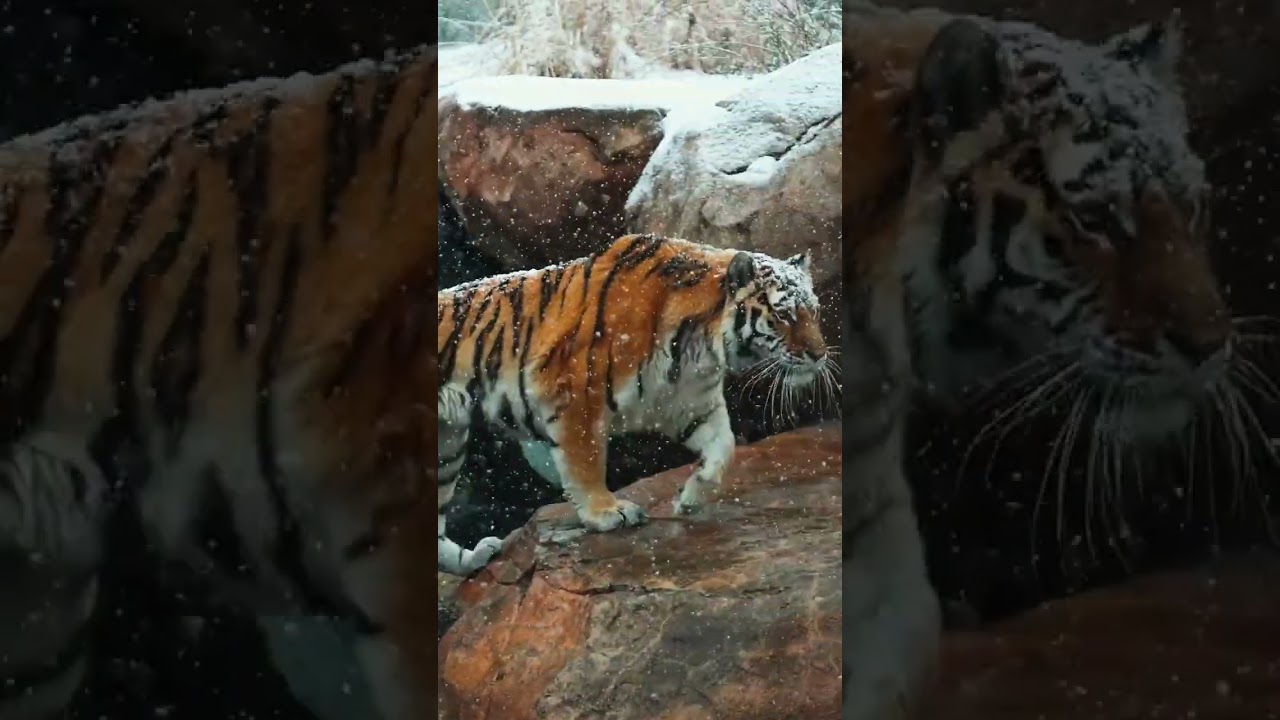-
The ecology and behavior of Amur Tigers, highlighting their adaptations to snowy habitats.
-
The role of Sedgwick County Zoo in Amur Tiger conservation and its commitment to wildlife education.
-
Behind-the-scenes insights into the Amur Tiger exhibit at Sedgwick County Zoo, emphasizing their care and enrichment programs.
-
The global significance of conserving Amur Tigers and the challenges they face in the wild.
- Community and visitor engagement initiatives at Sedgwick County Zoo to promote awareness of Amur Tiger conservation.
Amur tigers, also known as Siberian tigers, are powerful symbols of biodiversity in the regions they inhabit. These magnificent cats are the largest of the tiger species, specifically adapted to the harsh, snowy climates of Russia’s Far East. They possess a thick coat, long legs for plowing through deep snow, and an expansive territory for hunting prey. Their population, however, is alarmingly low, with only about 500 individuals left in the wild, making the role of zoological institutions critical in their survival.
Sedgwick County Zoo takes pride in its dedication to the conservation of the Amur Tiger. The zoo houses these big cats in an exhibit designed to simulate their natural environment, accommodating their physical and psychological needs. Through this exhibit, Sedgwick County Zoo actively participates in the Species Survival Plan (SSP), a program coordinated by the Association of Zoos and Aquariums aimed at sustaining a healthy, genetically diverse tiger population.
The Amur Tiger exhibit at Sedgwick County Zoo is not simply a viewing experience. Behind the scenes, a dedicated team works tirelessly to provide enriching activities that challenge the tigers’ natural instincts. These activities range from scent markings to puzzle feeders that encourage problem-solving. Ensuring Amur Tigers remain active and stimulated is key to their physical and mental health.
Moreover, Sedgwick County Zoo is actively involved in global conservation efforts. They support anti-poaching initiatives, habitat restoration projects, and scientific research aimed at understanding the challenges faced by Amur Tigers in their natural habitats. These efforts are crucial as habitat loss, poaching, and human-wildlife conflict continue to threaten their existence.
Community involvement is also a significant aspect of Sedgwick County Zoo’s mission. Educating the public about Amur Tiger conservation is achieved through engaging exhibits and interactive programs. The zoo offers educational tours, workshops, and events that aim to foster a deeper understanding of these tigers and the vital role they play in their ecosystems. Visitors are encouraged to participate in conservation efforts, driving home the message that saving the Amur Tiger is a responsibility shared by all.
The zoo also seeks to inspire future generations through educational outreach. By collaborating with schools and community organizations, Sedgwick County Zoo sparks interest and passion for wildlife conservation amongst young enthusiasts. They also leverage digital platforms and social media to broaden their reach, ensuring that even those unable to visit can learn about and support Amur Tiger conservation.
Sedgwick County Zoo’s Amur Tiger exhibit stands as a testament to the possibilities of combining education, conservation, and public engagement. Their efforts not only safeguard a critically endangered species but also connect people to nature, emphasizing the importance of preserving our planet’s biodiversity for future generations.
Amidst these endeavors, the plight of the Amur Tiger remains a powerful call to action. Every visitor, virtual or in-person, is reminded of the critical juncture at which these tigers stand. Through education and engagement, Sedgwick County Zoo and its visitors contribute to the global tapestry of conservation efforts needed to ensure that the Amur Tiger’s roar continues to echo in the snowy wilderness for generations to come.
*****
Source Description
Think tigers prefer warm weather? Think again! ❄️🐅 Yesterday’s snowfall was just their kind of weather, and they were loving it!
Our Amur tigers are built for the cold! Unlike their tropical relatives, Amur tigers (also known as Siberian tigers) are native to the frigid forests of Russia, where winter temperatures can drop to -40°F. Their thick fur, extra fat layer, and massive paws (which act like built-in snowshoes) help them thrive in snowy conditions.
Next time you visit on a chilly day, don’t be surprised if our tigers are some of the most active animals you see!
#SedgwickCountyZoo #AmurTigers #DidYouKnow #FunFact #SnowDay


